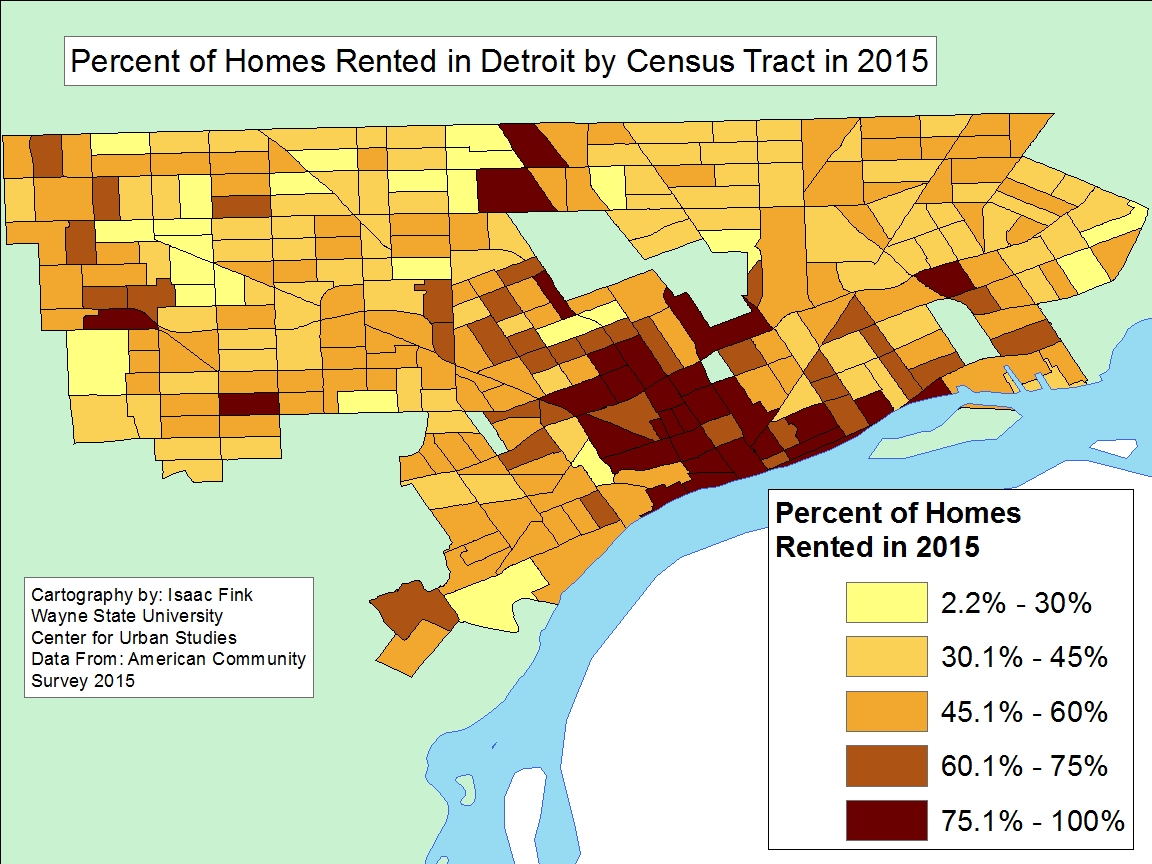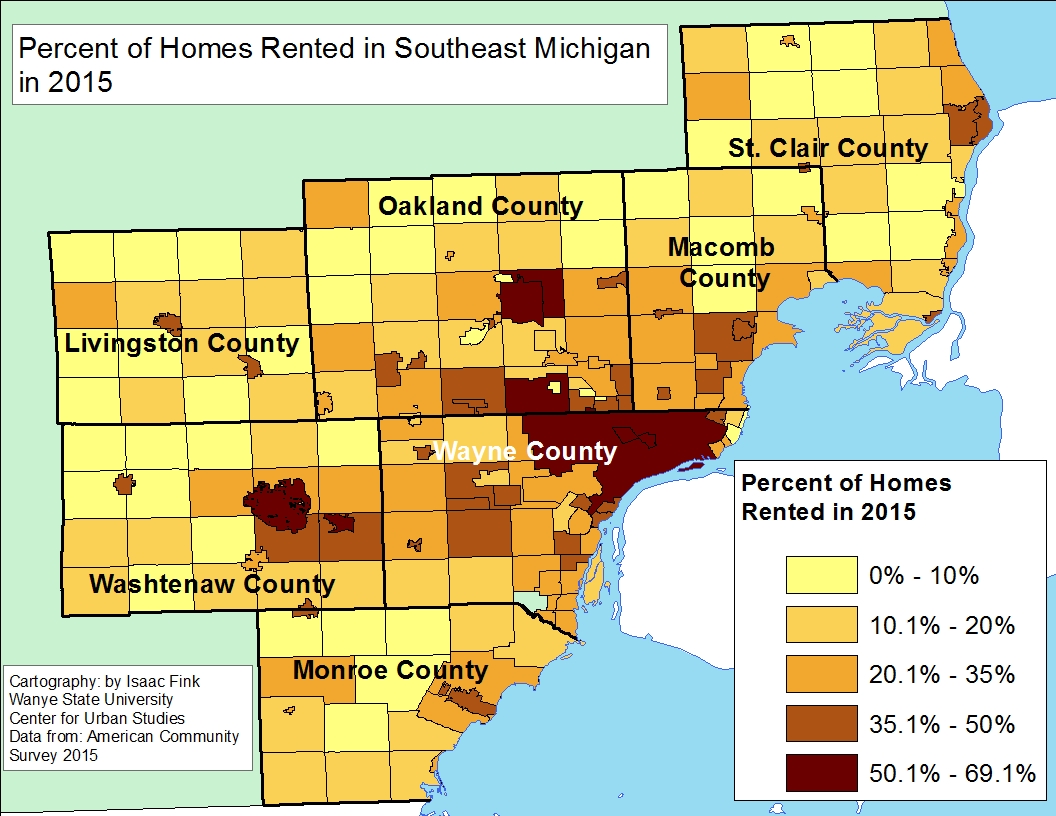In 2015 there were nine cities in Southeastern Michigan where more than 50 percent of the housing units were renter occupied. Ypsilanti had the highest percentage of renters at 69 percent, followed by Royal Oak Township at 67 percent. Ann Arbor, Auburn Hills and Detroit, all homes to universities, also had more than 50 percent of its housing units renter occupied. In Detroit, 51 percent of the occupied housing units were renters. Areas with the highest percentage of renters in Detroit were located along the river and in the lower Woodward Corridor. In these areas more than 75 percent of the housing units were occupied by renters. Conversely, areas such as Palmer Park and Rosedale Park had among the lowest percentage of renters, ranging between 2 and 30 percent. There were only 20 Census tracts in Detroit where 30 percent or less of homes were occupied by renters. As seen below, majority of the Census tracts throughout Detroit had between 30 and 60 percent of the occupied housing units occupied by renters.
At the county level, Livingston County had the lowest percentage of renters at 15 percent while Wayne County had the highest percentage at 37 percent. In Livingston County, Cohoctah Township had the lowest percentage of renters at 3 percent and Howell had the highest percentage at 48. In Wayne County, it wasn’t Detroit with the highest rental rate, but rather Highland Park at 64 percent. Grosse Pointe Farms had the lowest rental rate in Wayne County at 2.6 percent.
Regionally, the average percentage of homes rented was 22 percent in 2015; of the 210 communities in the region 112 of them had less than 22 percent of the housing units occupied by renters. Of those 112 communities, 47 of them had rental rates below 10 percent. Novi Township, located in Wayne County, had the lowest percentage of renters at 2 percent, followed by Orchard Lake (2.3%) and Grosse Pointe Farms (2.6%).
While there were less than 10 cities in the region with rental rates above 50 percent, we will highlight next week that there has been a trend toward renting in recent years, particularly in certain areas. In a recent Detroit Free Press article higher rental rates was attributed to the increased number of foreclosures that occurred during the mortgage crisis. A 2015 New York Times article discusses how homeownership rates had been falling for eight years straight at that time, largely due to the burst of the housing bubble.

